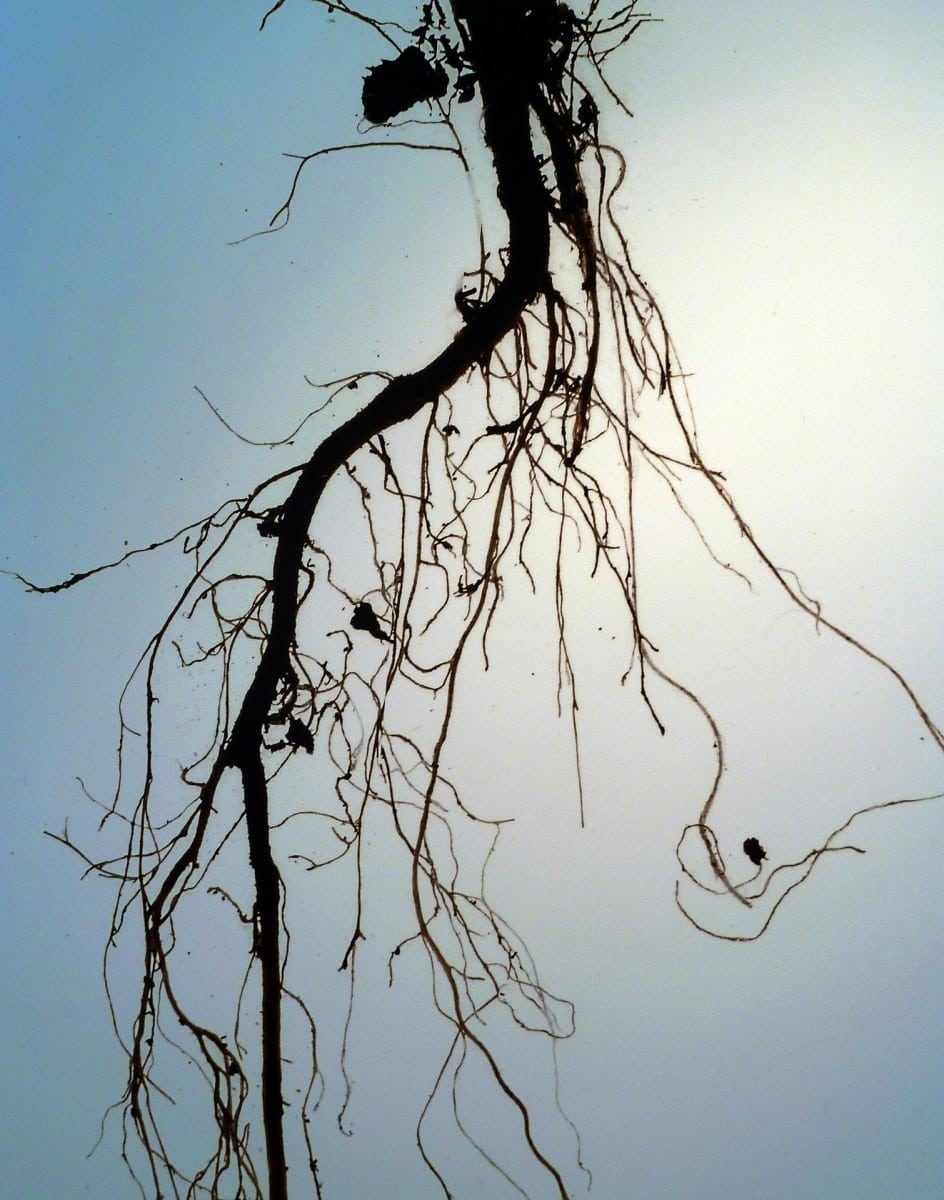
Roots of plants grow either horizontally or deep into the soil. Two plant hormones determine the direction of growth: auxin and cytokinin. This finding was discovered by an international team of researchers and could enable more resource-efficient plant cultivation during increasingly longer-lasting heatwaves.
Global Warming also affects soil. Prolonged heat waves draw moisture out of soil and vegetation. It is generally expected that winters in Europe will become warmer and wetter while summers will become hotter and drier. This endangers plant cultivation and consequently our climate and food security. Plants provide us with food, are important oxygen suppliers and are vital for human survival. The ever-increasing heat and drought stress which our crops are exposed to is a subject for research.
Charles Darwin (1809-1882) had already studied plant growth. The book which he wrote together with his son Francis Darwin – ‘The Power of Movement in Plants’ – bears witness to this. One of their findings was that the stem grows upwards and the root downwards. A phenomenon known in science as orthogravitropism. The Darwins also mentioned that the transmitter hormone auxin is able to regulate growth.
An international team of researchers led by cell biologist Professor Jürgen Kleine-Vehn from the University of Natural Reources and Life Sciences, Vienna (BOKU) has now discovered that two plant hormones interact and thereby determine the growth direction of roots: auxin and cytokinin. Auxin is responsible for growth down into the soil, cytokinin is responsible for horizontal propagation.
Auxin and Cytokinin
A few root cap cells are located at the tip of the root and determine how much of the transmitter hormone auxin is sent into the lower root side. These root cap cells have gravitropic sensors (statoliths) which signal the orientation of the root tip. If the root cap cells send a lot of auxin towards the lower root side, this leads to a reduction in growth on this side. At the same time, this triggers downward growth in the main root.
The cytokinin plant hormone becomes active on the upper side of the lateral root. It causes the lateral root to grow horizontally. Distribution of cytokinin is specifically for lateral roots and gives them the ability to spread sideways. The researchers were thereby able to show that the two plant hormones cancel each other out when it comes to lateral roots.
Influencing root systems
The researchers suspect that the root system might be strongly influenced by this process. For example, it would be possible to crop plants so that they can grow their roots more deeply into the soil. This would allow them to penetrate further into the soil and make better use of their environment.
In many regions, the immediate soil surface is to a large extent too dry for the cultivation of specific plants. At present, the only possible method is widespread irrigation. Complicated, as this is coupled with continual evaporation from the soil surface.
However, scientific insights into root systems could also help to reduce competition between crop varieties in soil throughout the world: root systems that predominantly grow deep underground have less contact with their neighboring plants. This could reduce the distance between particular crops and increase the yield per unit area.
Publication:
Dinneny, J.R./Dünser, K./Kleine-Veh, J./LaRue, T./Lindner, H./ Martopawiro, S./Novak, O./Petřík, I./Ruiz Rosquete, M./Sarkel, E./Sasidharan, R./Schöller, M./Wabnik, K./ Waidmann, S. (2019): Cytokinin functions as an asymmetric and anti-gravitropic signal in lateral roots. In: Nature Communications 10, Article 3540.
Origin of root gravitropism
At almost the same time, researchers at the Institute of Science and Technology (IST Austria) published an article on the evolution of gravity-driven root growth in plants. Yuzhou Zhang, postdoc member of Professor Jiří Friml’s group, succeeded for the first time together with his team in gaining insight into the development of root gravitropism. The ability of plant roots to grow downwards developed along with the expansion of plants from water to land about 500 million years ago. In order to find a habitat in the new environment, they had to firmly anchor themselves in soil so as to be able to access enough water and nutrients. Among other things, this revealed that it was primarily seed plants that first appeared around 350 million years ago. They were the first to develop rapid and efficient root growth in the direction of gravity.
Publication:
Yuzhou Zhang, Guanghui Xiao, Xiaojuan Wang, Xixi Zhang & Jiří Friml (2019): Evolution of fast root gravitropism in seed plants. Nature Communications.
Also interesting:
